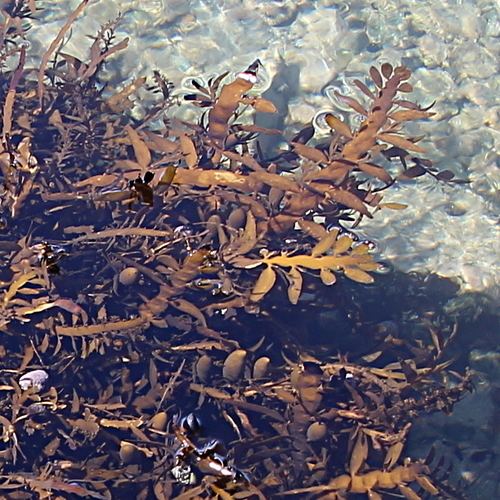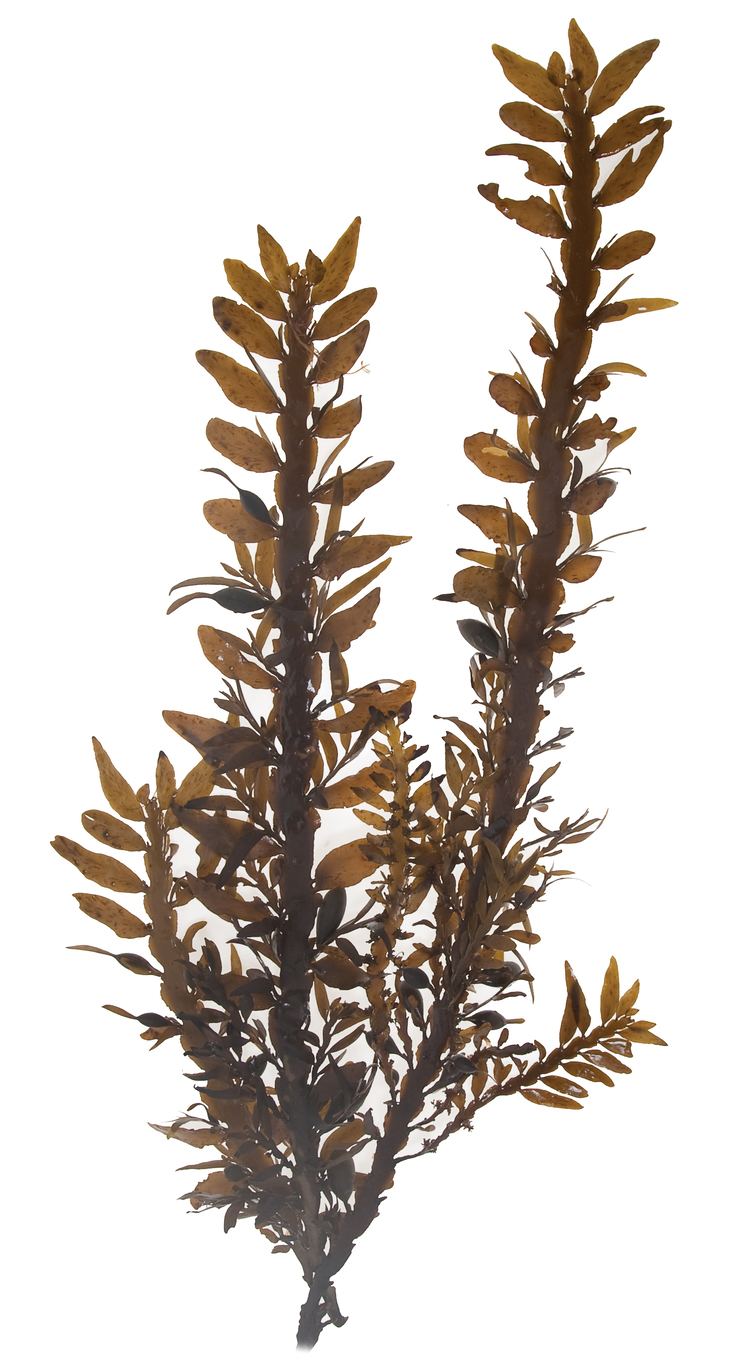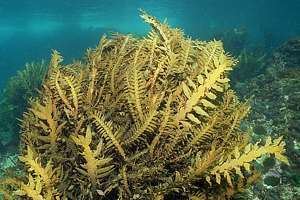Superphylum Heterokonta Rank Species | Class Phaeophyceae Genus Carpophyllum | |
 | ||
Scientific name Carpophyllum maschalocarpum Similar Fucales, Ecklonia radiata, Sargassaceae, Hormosira banksii, Kina | ||
Carpophyllum maschalocarpum top 18 facts
Carpophyllum maschalocarpum, commonly known as flapjack, is a brown alga that grows in crevices of rocks at low tide levels. It is a common alga in New Zealand. They don't have branches, leaves or flowers like land plants. They are attached to rocks, not by roots, but by holdfasts. They have flexible stems and their tops are called fronds. Many look and feel like leather and usually have air-filled bladders or spongy cells inside the stems that help the water support them. They feed using a process called photosynthesis.

Common name: Flapjack
The specimen we were given was a brown marine algae measuring approximately 40 cm in height, 20 cm in width. It was dark brown almost black on some parts. On drying it became brittle. The main axis (stipe) was flat, wide, sinuous, percurrent with a twist at the base leading up from a holdfast. The branch of the specimen was flattened, leathery and brown with alternating axillary reproductive branchlets coming off of a central stipe. The blades were asymmetric and emarginated. Growth occurs at the tips of these structures as a result of divisions in a single apical cell or in a row of such cells. As this apical cell divides, the new cells that it produces develop into all the tissues of the alga. Branching’s and other lateral structures appear when the apical cell divides to produce two new apical cells. At the base of the blades in the angle between the stipe are receptacles that produce gametes. These receptacles cluster on the leaf stalk, the leaflets are shorter and broadly falcate which became linear. The specimen also had gas filled floats called pneumatocysts, bladder like structures located near the lamina. Used by the algae to hold the branches near the surface of the water to assist with photosynthesis. The dark brown colour is due to the combination of chlorophyll a, c and fucoxanthin. From observation the algae is multicellular with clear definition between cell walls and inside of the leaflets, and stipe as seen in figures 2-5. There was a distinct structure in the receptacles that resemble spores, most clearly seen in figure 7. At the base of the stipe was a large mass of algal body, which we identified as the holdfast, which is analogous to a root system in plants. It serves to anchor the alga in place on the substrate where it grows, and thus prevents the alga from being carried away by the current. Unlike a root system, the holdfast generally does not serve as the primary organ for water uptake, nor does it take in nutrients from the substrate. It is flattened with lateral, peg like attachments. Based on our observations we identified the species as Carpophyllum maschalocarpum. C. maschalocarpum is found on rocks at low water in pools and channels forming a distinct zone especially on vertical rock faces on open coasts. It can be found in the North Island, South Island, and Chatham Islands. (In the South Island only as far as Banks Peninsula and Milford Sound) and is a food source for herbivorous marine animals, as well as being used as food additives, thickeners, stabilizers and fillers by humans





